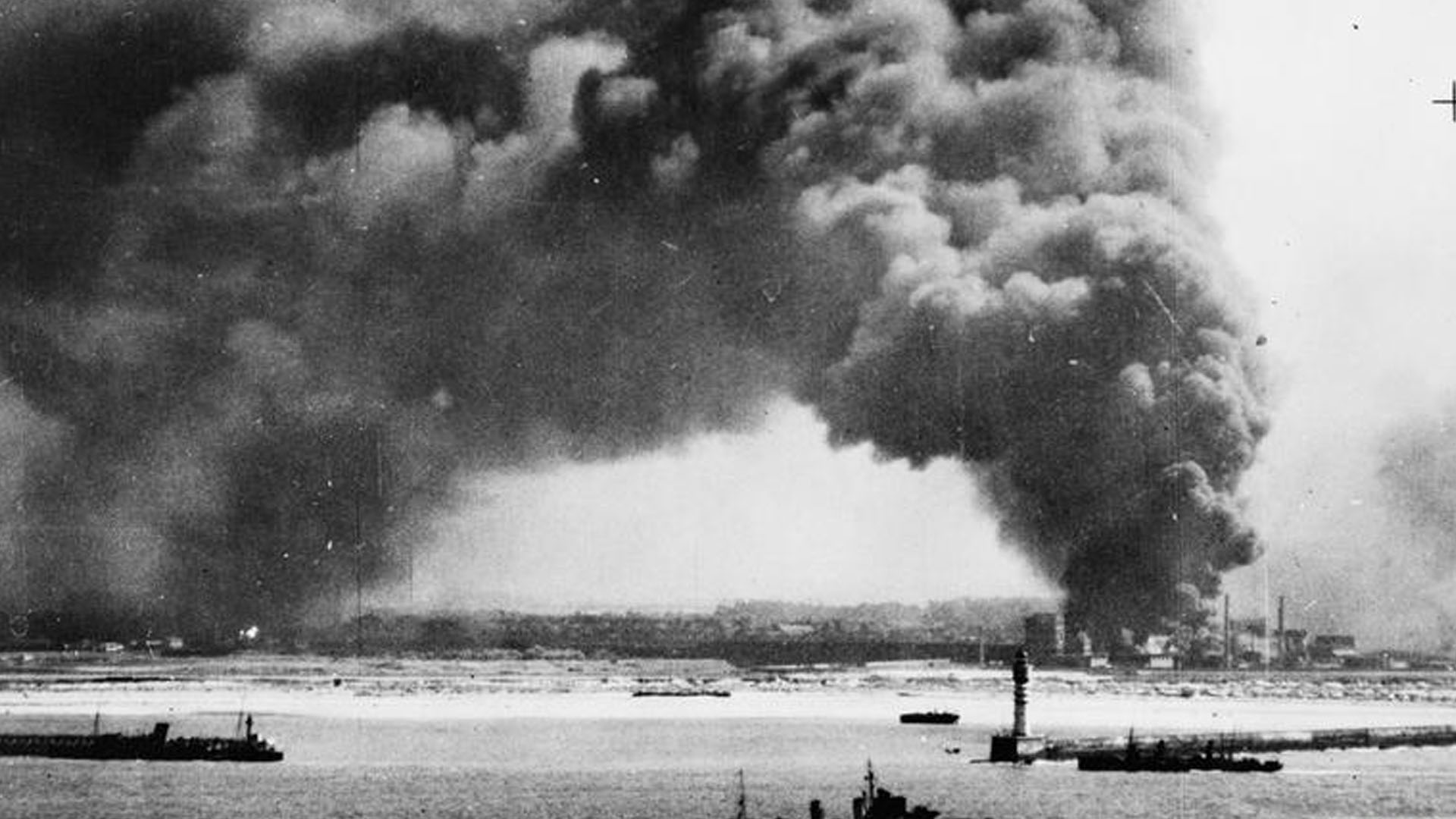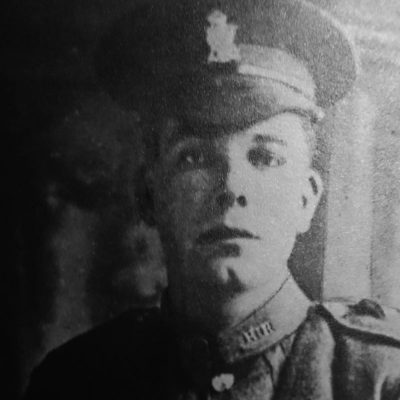2nd Battalion Royal Ulster Rifles fought throughout the Second World War including famous moments such as Dunkirk and D-Day. They mobilised on 1st September 1939 and a month later, the soldiers were in France; first Cherbourg, then Parennes, Templemars, and on to Lezennes near Lille.
In 1939-1940, 2nd Battalion Royal Ulster Rifles was part of the 9th Infantry Brigade, 3rd Infantry Division. They formed part of the British Expeditionary Force under Major General Bernard Montgomery. Their fearsome reputation earned the nickname “Monty’s Ironsides”.
It’s alright then – the Rifles are there.
Major General Bernard Montgomery, May 1940.
In early 1940, the weather on the Western Front was cold and wet. The Rifles’ job was preparing the border defences between France and Belgium. This involved intensive digging in snow and frost. They had regular leave to the United Kingdom as all was “quiet on the Western Front”. This was the period known as the “Phoney War”.
10th May 1940
Eight months into the “Phoney War”, on 10th May 1940, Germany invaded the Low Countries. The British Expeditionary Force invoked Plan D leaving the defences behind and advancing into Belgium. 3rd Infantry Division took up position on the River Dyle. Under command of newly-promoted Lieutenant Colonel Knox, 2nd Battalion Royal Ulster Rifles deployed to the city of Louvain. They covered a wide front of around 2,200 yards, manning approaches to the city.
14th May 1940
On the way to Louvain, the Battalion heard many rumours and false reports. One such report stated the enemy was using chlorine gas and so most of the Battalion arrived in the town wearing respirators. The smell hanging in the air, in fact came from an electric battery factory destroyed by Luftwaffe bombing.
At 0700hrs, A Company lost a Non-Commissioned Officer, possibly Corporal John Henry Moore, and 5 other soldiers sustained injuries. A Belgian ammunition lorry drove through a fence onto a small anti-tank minefield causing an explosion. The resulting fire and exploding ammunition blocked the road for several hours. Low-flying enemy planes dropped bombs around the Battalion Headquarters causing further injuries.
The Rifles dug in, laid mines, and waited. The first sight of the enemy was a motorcycle unit. The Rifles took it out with a burst of fire from a Bren Gun. The first Royal Ulster Rifles shots of the Second World War had been fired. By nightfall, the Battalion engaged all along the railway line of Louvain. They fought like experienced veterans for five days holding the town in the face of artillery and mortar fire.
During the evening of 14th May 1940, the Belgian unit interspersed within the Rifles’ ranks dispersed. Under particularly heavy mortar-fire, orders came down the line for the Belgians’ withdrawal. At 2100hrs, they got on their bicycles and disappeared into the night. Reports suggest the Rifles accepted this move “quite calmly”.
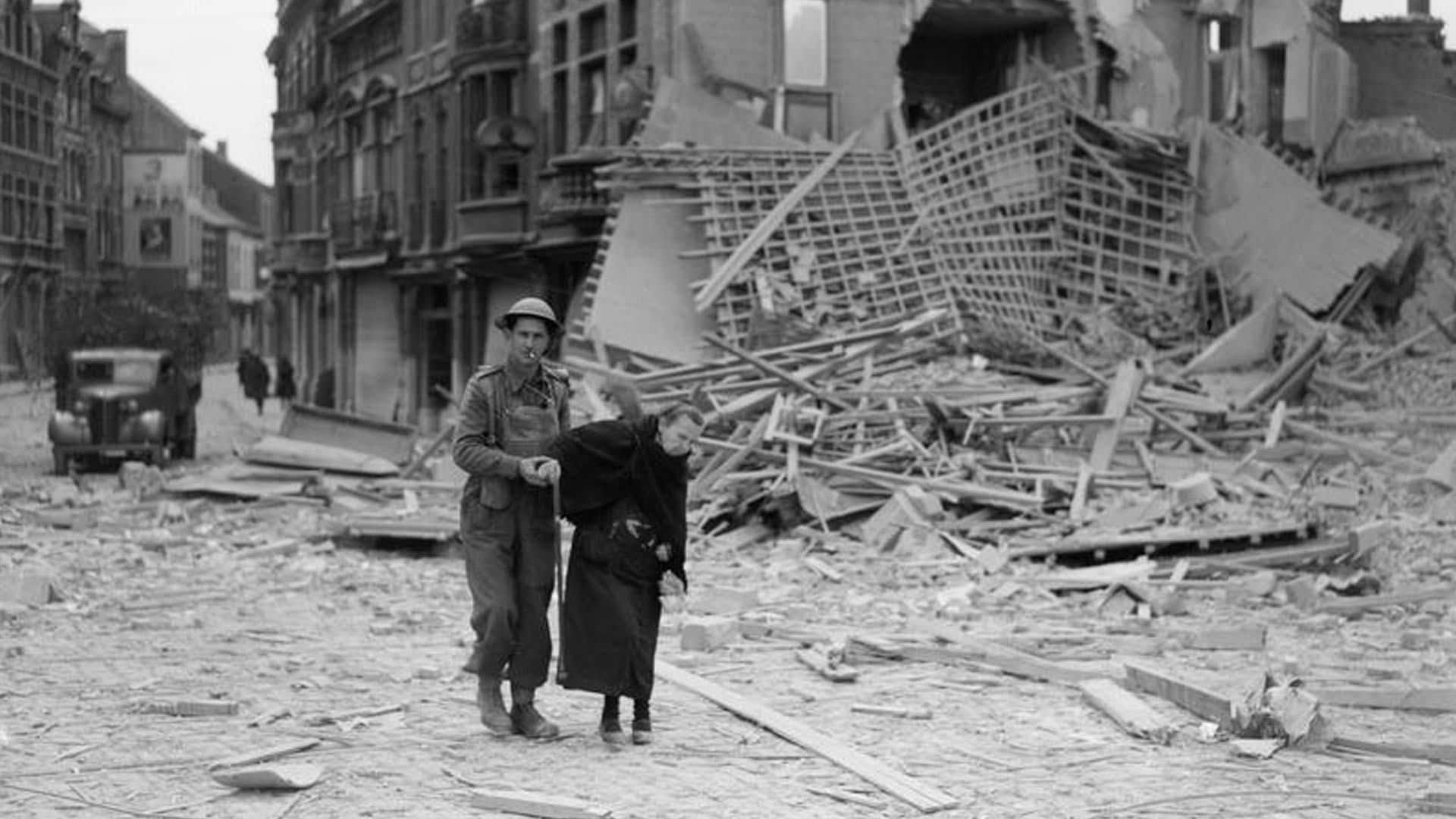
Imperial War Museum Photo: (F 4417) (Part of the War Office Second World War Official Collection). A soldier of the British Army walks through the streets of Louvain, Belgium with an old local woman. She had been hunting through the rubble left in the wake of the Luftwaffe aerial bombardment. Copyright Lieutenant Kessel - War Office Photographer.
15th May 1940
As dawn broke on 15th May 1940, enemy shells fell around the Battalion. During the previous night, the enemy made several attempts to penetrate the line. 2nd Battalion recorded a Company Sergeant Major and another Rifleman missing. Captain AW Ward moved C Company into the town and Lieutenant RA Davis moved B Company into reserve in Louvain. At 0530hrs, the Rifles opened a Battalion Headquarters at Louvain Town Hall. Soon after, the German Army penetrated the line at the railway station but a counterattack from the Rifles restored the situation. Short but fierce engagements took place at the Bala-Tiger post with effective use of hand grenades by the Rifles.
One man noted for his bravery on 15th May 1940 was Corporal Jabez Edward Gibbens of Nottinghamshire. Twice, he broke up attacks on his Platoon by moving into an exposed area on the flank and opening up with Bren gun fire. He also rescued a fellow member of the Platoon wounded on the railway line. Gibbens died in action later in the day.
2nd Battalion Royal Ulster Rifles received support from 7th Field Regiment of the Royal Artillery. From the centre of Louvain, the Battalion’s mortar Platoon also covered fighting at the railway station. Additional artillery cover came from the 2-pounders of Lieutenant HGJ Coddington’s Platoon. Regimental diaries record the “heartening sight” of Captain ML Cummins who rode through the town on a white horse. That evening, Battalion Headquarters received an SOS from A Company as enemy soldiers penetrated a gap between them and 1st Battalion Grenadier Guards.
16th May 1940
The morning of 16th May 1940 began with order restored in the Battalion’s area. There had been some fighting overnight and C Company’s Captain Ward injured. By dawn, Lieutenant Garrett had taken over command of Ward’s Company and the job of defending the railway station. At the station, the Rifles held the entrance, the subways, and one platform. Lieutenant Garstin made good use of the subway, emerging on occasion to fire his Bren Gun before returning underground.
Less than 25 yards away, the enemy held the opposite platform. They also held an embankment overlooking the station as well as the houses along its top. From behind the cover of railway cars at the station, German snipers and machine gunners operated. Gunfire and grenades smashed the glass roof of the railway station and tore down the boulevard. Lieutenant Tighe-Wood and Lieutenant Coddington received mention in the Battalion diaries for their distinguishing work.
During the day, German troops entered the station yard after blasting with heavy artillery fire. A counterattack from the Rifles with grenades and Bren Gun repelled the enemy and they made no further efforts at this point. Things were not so easy in the slit trench dig into the cinders and slag of the railway embankment. At one point during 16th May 1940, enemy fire struck the trench from all sides and the silence from within signalled the worst. Moments later, a shout went up from Lieutenant Bredin and his Bren Gun let fly again. The Rifles held the trench until ordered to withdraw.
Discussions had taken place outside of the Royal Ulster Rifles’ knowing. The British Expeditionary Force in other areas was under great threat and soon the Rifles would receive orders to withdraw to Brussels. The mood in the Rifles’ camp picked up after a visit to Headquarters from Divisional Commander Major General Montgomery. That evening, the Battalion would march 21 miles along paved roads to a spot a few miles outside of the Belgian capital.
The night of 16th May 1940 saw the successful withdrawal of 2nd Battalion Royal Ulster Rifles from Louvain. Lieutenant JCSG De Longeuil and Sergeant McConville’s Carrier Platoon acted as a covering rear party. They helped drown out the noise of any retreating troops and by 2230hrs, the Battalion was once again on the march. The withdrawal was quiet and uneventful with only an occasional shell burst sounding over the city. Many of the Riflemen were sad to leave Louvain. They felt their 5 days there had been a success and their local knowledge would help hold the city for longer. They had also become something of locals themselves, helping evacuees and locals. Battalion Doctor Captain Patterson even delivered a baby in the cellar beneath his post on the day of the Rifles’ departure.
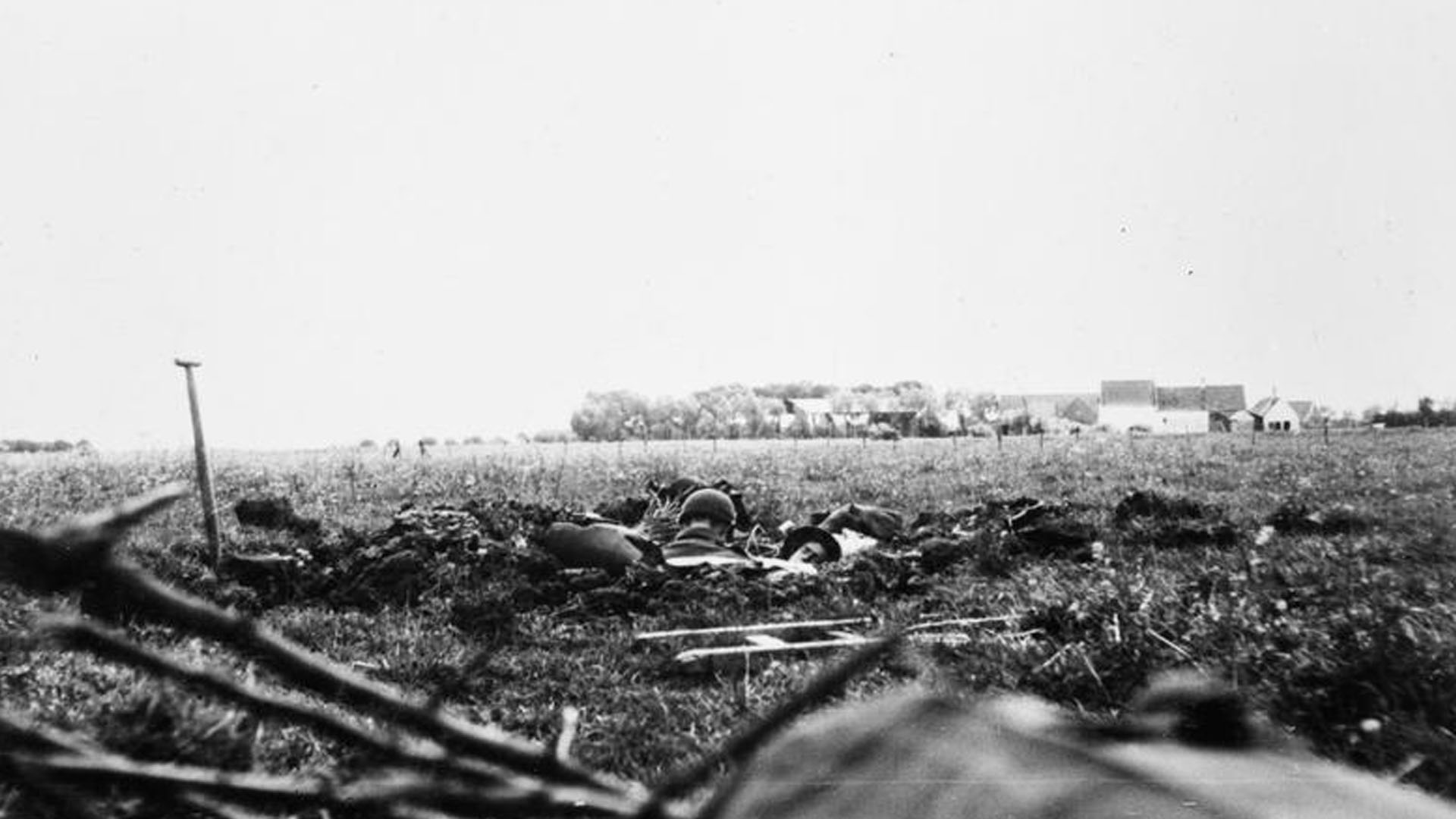
Imperial War Museum Photo: HU 1133 (Part of the Major H E N Bredin Collection). Men of the 2nd Battalion Royal Ulster Rifles dug in near Furnes, looking towards the German lines during Operation Dynamo in May 1940. The RUR were part of the British Expeditionary Force in Europe. Photo used under Fair Dealing.
17th May 1940
At 0600hrs on 17th May, 2nd Battalion Royal Ulster Rifles arrived in the Belgian capital Brussels. Despite the sleepless nights and long marches, the Battalion spruced itself up for their arrival. As part of Montgomery’s 3rd Division, long route marches were part of the Battalion’s intensive training. At 0900hrs, the troops rested for 2-3 hours awaiting the arrival of more troops on vehicles. From Brussels, 2nd Battalion marched on a further 9 miles to the town of Leeuwergem. Roads jammed with infantrymen, civilian refugees, and military vehicles slowed down progress. The Battalion established their position shortly after 1830hrs.
18th May 1940
On the morning of 18th May 1940, a pair of British tanks approached the Rifles’ position. The crews found all bridges across the river demolished, and so, set fire to their vehicles and swam across. Captain EDD Wilson in an attempt to help the crew fell into a part of the river near a fish factory. He soon dried out and found a new pair of trousers but the fish stench from his jacket took some getting used to.
The enemy carried out some shelling of the Battalion’s position causing some casualties. The Rifles also fought off some enemy motorcycles and light tanks. Compared to the fighting in Louvain, it was less pressing although A Company’s Headquarters had a lucky escape. A shell penetrated the roof of the building they occupied but failed to explode until it landed in the unoccupied cellar beneath.
Again, news from the other BEF fronts was not good and the following day would see the Battalion withdraw once again.
19th May 1940
At 0800hrs on 19th May 1940, the Battalion was to withdraw some 33 miles in broad daylight. This time, there were no troop-carrying lorries. The Rifles destroyed more non-essential items and made use of commandeered civilian vehicles to aid in the retreat.
At dawn, Battalion Headquarters, A Company, and D Company left first under the command of Major Benson. Next to leave was Lieutenant-Colonel Knox’s Tactical Headquarters, B Company, and C Company. He also commanded a Company of 2nd Lincolns and a Machine Gun Platoon of 2nd Middlesex Regiment. Artillery fire and shrapnel caused some casualties as they approached a rendezvous point. There, they made use of the many commandeered vehicles and bicycles. Lieutenant Davis had acquired a bright red 20-ton lorry and was fortunate to be able to stick to mainly straight roads.
By noon, much of the Battalion was in Tieghem, 6 miles from Oudenaarde. There, they enjoyed a short rest and several mugs of tea with the hope that a quiet night of sleep might follow. It soon became clear that 2nd Battalion Royal Ulster Rifles was the first line of defence and by 1830hrs, soldiers were dug in along the Courtrai-Bossuyt Canal. They held ground there for the next 3 days and enjoyed some of the advantages of a countryside not yet ravaged by the enemy. There were cream, eggs, butter, and even champagne to be had if one knew where to ask. The Battalion diaries suggest an Officer even had a shave using some hot gin.
22nd - 24th May 1940
The Battalion made it to Tourcoing near the border between France and Belgium. On 24th May 1940, German High Command gave an inexplicable “halt” order. Panzer Divisions stopped for 2-3 days in places while their forces replenished. This gave the Allied soldiers some respite and a chance to dig in stronger points of resistance. The order in the British Expeditionary Force was:
Fight to the last man, and the last round.
The Battalion enjoyed a 5-day rest, catching up on sleep, checking supplies, and tending to personnel. By this stage of the retreat, it was accepted that men would help themselves to milk and eggs from farms, and other stock from abandoned NAAFI stores.
To date, 10 soldiers from the Battalion had died during the evacuation. At Tourcoing, Montgomery presented awards for valour but in reality, the battle for France was all but over. Still around 50 miles from the sea, many were predicting re-embarkation and hoping for a journey home.
23rd - 27th May 1940
As darkness fell on 23rd May 1940, Benson and his troops moved out beginning a further retreat of 12 miles to Tourcoing. An Anti-Tank Company and Sappers of 253rd Field Company Royal Engineers ensured the demolition of all bridges before the enemy arrived. There was, however, no enemy follow up. The enemy had given the inexplicable “Halt Order” stopping Panzer Divisions in their tracks. 2nd Battalion Royal Ulster Rifles, like many others in the British Expeditionary Force enjoyed a few days of respite.
At Tourcoing, B Company occupied a large cotton warehouse where the threat of fire loomed large. Meanwhile, Reserve Companies enjoyed bathing in a local stream, and Padre Neill returned laden with refreshments from an abandoned NAAFI train. One noteworthy moment in Tourcoing was the return on Captain Grimshaw who against all odds had rejoined the Battalion having been left behind with a rear-guard party on 10th May 1940. The Battalion took stock of their situation confirming 1 wounded officer, 10 soldiers killed, 34 soldiers wounded, and 8 soldiers missing.
On 26th May 1940, General Montgomery visited the Battalion at Tourcoing. There, he decorated Lieutenant-Colonel Knox with the Distinguished Service Order, and Lieutenant Garstin with the Military Cross. Sergeant Henderson, Sergeant Baudains, Sergeant Kiely, and Corporal Martin received the Military Medal. One of those recipients also received a severe reprimand on the same day. When Major Benson mentioned this, the Non-Commissioned Officer quipped:
As a matter of fact, sir, I didn’t deserve wither, so I’m about quits on the deal.
The peace and tranquility at Tourcoing could not last. At 1900hrs on 27th May 1940, Lieutenant AF Ruxton arrived with news of the next withdrawal. The Rifles would be going into uncertain territory armed with Bren Guns and Anti-Tank Rifles. The enemy was once again on the move and shelling knocked out a pair of 2nd Battalion’s vehicles. The fighting retreat continued and by the end of the night, the Battalion had moved 18 miles to the banks of the Yser Canal at Boezinge.
28th May 1940
As day broke on 28th May 1940, the Battalion dug in at Boezinghe. Throughout the morning, they came under mortar fire and sustained casualties among the forward Platoons. D Company and part of C Company beat off an enemy attack with hep from the Vickers machine guns of 2nd Middlesex Regiment. Among those mentioned in the War Diary for the day was D Company stretcher-bearer Bandsman Ellis who extricated injured parties from exposed positions. Platoon Sergeant Major Wilson also of D Company kept his men “particularly cheerful” and Rifleman Crowe the Company Cook showed indignation at being wounded while he cooked dinner.
That evening, the entire Battalion withdrew once more to Woesten, 4 miles to the west. By this stage, the Battalion had run out of maps. At the beginning of the campaign, they had a truckload of them but no one had predicted the hasty 95-mile retreat.
29th May 1940
As early as 0430hrs on 29th May 1940, 2nd Battalion Royal Ulster Rifles were under fire at Woesten. This began one of the worst days of the campaign for the Battalion. Their position on a forward slope offered little cover. Despite digging decent slit trenches, the Battalion sustained a number of casualties. The Battalion Headquarters also took a direct hit causing at least 6 more casualties.
Orders came early in the day for a further withdrawal to Bulscamp that evening. The plan was to move after dark leaving rear-guard holding positions until 2100hrs. The afternoon saw the Battalion destroy blankets, packs, valises, greatcoats, and groundsheets. This would free up space in the available transport. They also burned documents, clothing, and extra kit. By nightfall, the Battalion was ready to move.
German troops used the failing light to attempt more infiltrations of the Allied line. A concerted attack came at 2030hrs, leaving forward Platoons almost in hand-to-hand combat until their scheduled fallback time. The Anti-Tank platoon lost their 2 guns and many troops became prisoners. One forward Platoon would have been wiped out entirely had it not been for help from 2nd Lincolns.
Those who escaped began the 12-mile march north-west to Bulscamp. Troops and vehicles of almost every Division of the Expeditionary Force wound up the main Ypres-Furnes Road. The main force crossed the Yser Canal well within the range of enemy guns. On arrival at Bulscamp, soldiers found the main bridge destroyed. A pontoon bridge replacement also burned. Heavy shelling fell around the area and in the chaos, the Battalion located a minor road where another smaller bridge crossed the canal 3 miles further west. It took 6 hours to cover the 12 miles. In the darkness and chaos, Captain RA Davis overshot the village and made it as far as the coast. There, he received orders to board a Destroyer. Knowing his Battalion still had a job to do, he turned around and retraced his steps and found Battalion Headquarters.
30th May 1940
At 1000hrs on 30th May 1940, the Battalion began to dig in again although found much of the area flooded. B, C, and D Companies held a wide front with A Company in reserve. At a farmstead with a view over the surrounding area, the Battalion established their Headquarters. As well as the Officers of the Rifles, the farm was home to several refugees who had sought shelter in the basement.
When Quartermaster Lieutenant Henniker arrived at Headquarters, he brought no rations. By this stage, the Rifles had its own teams of cow milkers, fowl catchers, and pig butchers. In the farmhouse, Major Benson lay down on a comfortable feather bed to enjoy a quick smoke, awaking several minutes later to find it on fire. Apart from this accidental drama and some light shelling, it was a quiet day for the Battalion.
All your countrymen have been following with pride and admiration the courageous resistance of the BEF during continuous fighting of the last fortnight. Faced by circumstances outside their control, under a position of extreme difficulty, they are displaying a gallantry that has never been surpassed in the annals of the British Army. The hearts of every one of us at home are with you and your magnificent troops in this hour of peril.
Message from King George VI read to 2nd Battalion Royal Ulster Rifles.
31st May 1940
Early on 31st May 1940, a Brigade conference took place to organise the final withdrawal to Dunkirk. The plan was for the Brigade to embark that night and return to the United Kingdom. Occasional shelling interrupted the conference, which lasted several hours. Commanding Officers attempted to lay out as much detail as possible. 3rd Division and 4th Division were to board ships during the night of 31st May 1940, although no one knew what shipping was available.
Reception camps at La Panne were set up where soldiers from each Battalion would reconnoitre. Guides would lead them into Dunkirk in groups of 200. Divison control staff would take over and direct soldiers to temporary piers and onto waiting vessels. A Battalion like the Royal Ulster Rifles was only to carry Bren Guns, Anti-Tank Rifles, Rifles, and 100 rounds of ammunition. Orders came to destroy everything else including transport and communications equipment. Once completed, the Battalion would hold position until 0230hrs on 1st June 1940. Embarkation would take place at La Panne until 0400hrs and at Bray-Dunes afterward. Throughout the day, enemy activity increased, the pounding of shells, and the rattle of machine guns grew ever closer.
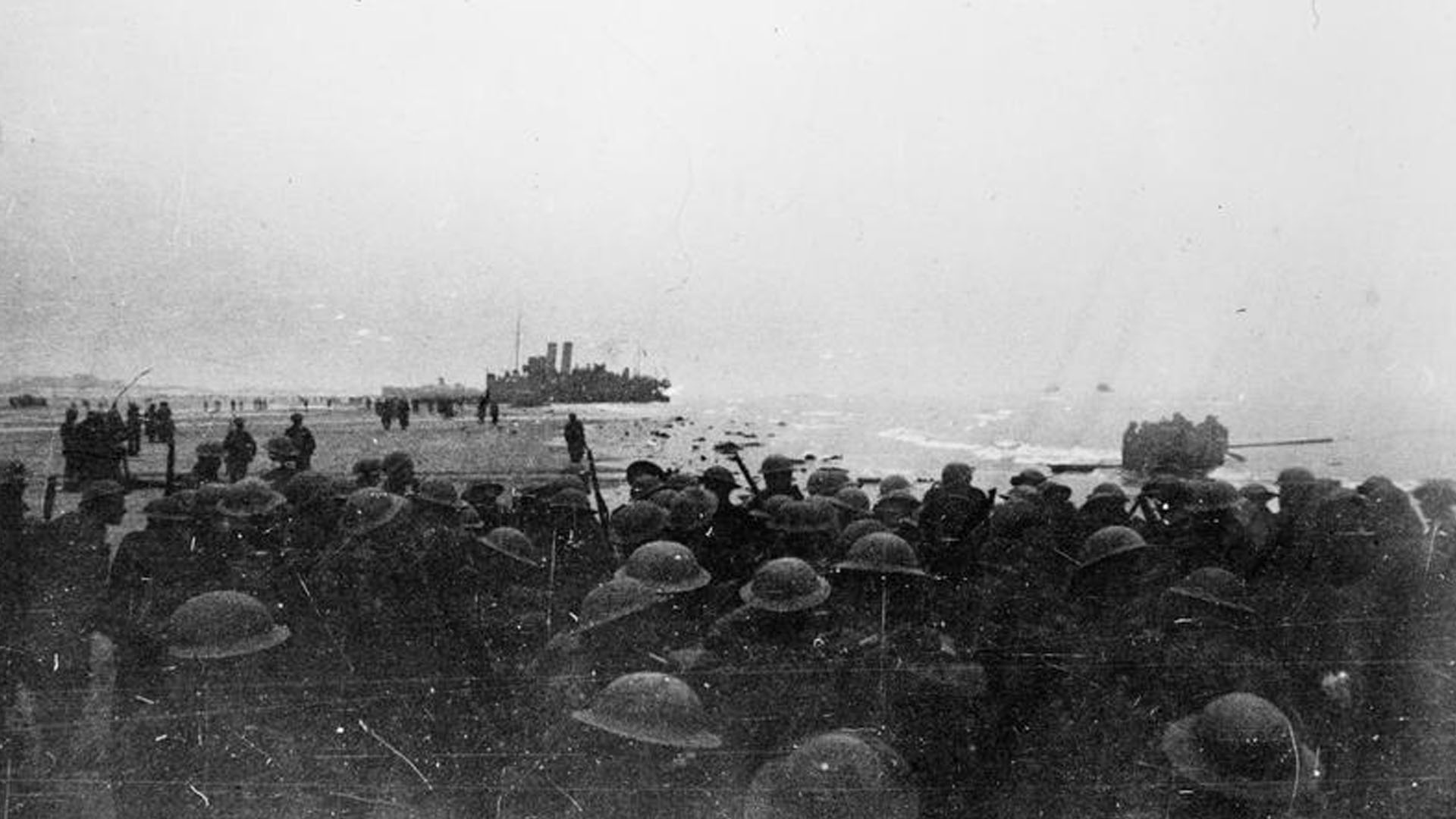
Imperial War Museum Photo: HU 1137 (Part of the Major H E N Bredin Collection). Men of the 2nd Battalion Royal Ulster Rifles awaiting evacuation at Bray Dunes, near Dunkirk during Operation Dynamo in May 1940. The RUR were part of the British Expeditionary Force in Europe. Photo used under Fair Dealing.
1st June 1940
At 0230hrs on 1st June 1940, 7th Field Regiment of the Royal Artillery, still supporting 2nd Battalion Royal Ulster Rifles fired their final shell. Bridges to La Panne remained intact although under heavy mortar and shell fire. The town itself burned and confusion and chaos reigned. Control Staff who had been regulating movement had gone and the Battalion failed to find their reception point. Captain Drummond decided the town was unsafe and as one, the Battalion made for the beaches.
By this stage of the Battle, both C Company and D Company were down to 50 soldiers per Company. They rearmed with abandoned Anti-Tank Rifles and Bren Guns and fought onwards. Lieutenant Gordon was one of the first Officers to cross the English Channel in a Minesweeper. Another Officer, Lieutenant Garstin, found his vessel bombed on the homeward journey. He was able to squeeze through a porthole and swim to safety.
The rest of C Company and D Company made it to Dunkirk early on 1st June 1940. Lieutenant Humphrey Edgar Nicholson Bredin of D Company fell exhausted on an Isle of Man Steamer. He convinced the Captain to overfill the vessel to ensure all his Company got on board. To his surprise, he found a steward onboard in white uniform serving the soldiers. The steward asked if he could bring the commander anything. Bredin asked, in hope, if he could have a beer. The steward informed him that ship policy dictated alcohol could only be served when more than 3 miles out.
That convinced me we would win the war!
Humphrey Edgar Nicholson Bredin
At sunrise on 1st June 1940, the remaining troops of 2nd Battalion Royal Ulster Rifles set off for Dunkirk. The 11-mile march through soft sand halted frequently as Messerschmitts strafed and bombed the coastline. German planes crossed the skies every few minutes. Allied planes arrived around once an hour. The Battalion waited for a time at Bray-Dunes where they hoped ships might come into a makeshift pier. A thick cloud of black smoke hung over Dunkirk as the Rifles approached marching as one.
At 1100hrs, the leading soldiers of the Battalion boarded a Destroyer at the Dunkirk Mole. While boarding, the Destroyer pulled away to assist with an SOS call from the sinking SS Scotia. With only a short wait on the Dunkirk Mole, the rest of 2nd Battalion Royal Ulster Rifles boarded another Destroyer. Their crossing of the English Channel was quick and uneventful. With members of the Battalion crossing on ships small and large, they reassembled at Somerset a week later. There, they took stock. Initial reports indicated a total of 34 soldiers killed, 70 injured, and a further 70 taken prisoner of war. In total, more than 340,000 soldiers of the British Expeditionary Force returned from Dunkirk between 28th May and 4th June 1940.
